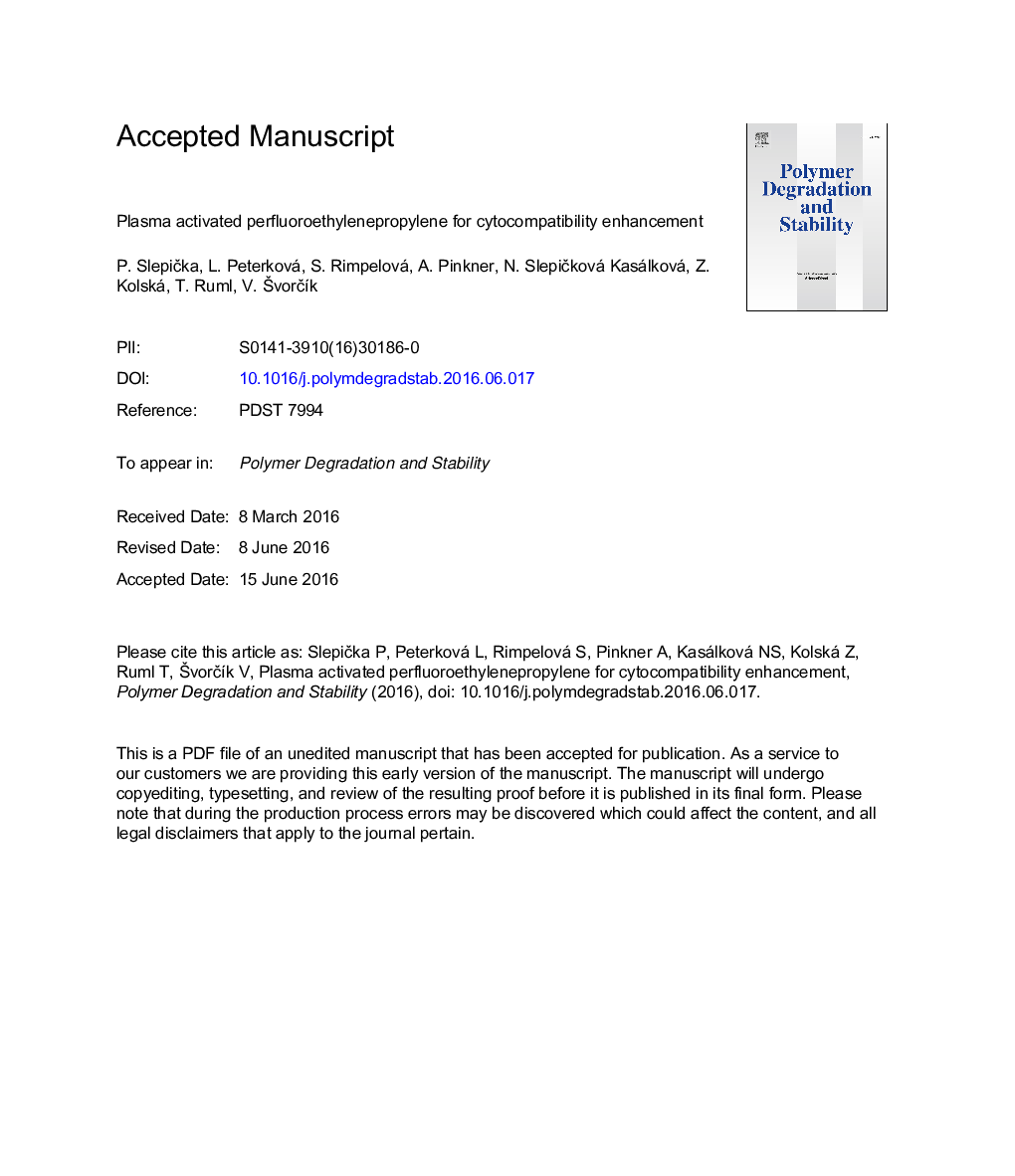| Article ID | Journal | Published Year | Pages | File Type |
|---|---|---|---|---|
| 5201085 | Polymer Degradation and Stability | 2016 | 30 Pages |
Abstract
The paper is focused on perfluoroethylenepropylene (FEP) plasma activation and cytocompatibility enhancement. Our main focus was on enhancement of one side of otherwise resistive and stable polymer by means of relatively easy a cheap method, plasma activation. The surface properties of FEP foil were altered with different plasma power and the influence of argon plasma treatment was determined. It was proved that wettability and morphology of FEP film can be specifically controlled and changed by means of combination of power and exposure time, the effect was accomplished by variation in oxygen concentration and specific morphology of treated surface. We have performed cytocompatibility tests involving monitoring of cell adhesion, proliferation and metabolic activity in vitro on a model cell line of human keratinocytes (HaCaT). Moreover, the expression profiles of two adhesion proteins were determined in dependence on the FEP treatment. A special attention was also paid to morphology of filopodia of HaCaT cells growing on FEP. The combination of altered surface morphology, wettability and chemistry led to creation of excellent biocompatible surface with a significantly positive effect on HaCaT cells adhesion, spreading and proliferation.
Keywords
Related Topics
Physical Sciences and Engineering
Chemistry
Organic Chemistry
Authors
P. SlepiÄka, L. Peterková, S. Rimpelová, A. Pinkner, N. SlepiÄková Kasálková, Z. Kolská, T. Ruml, V. Å vorÄÃk,
